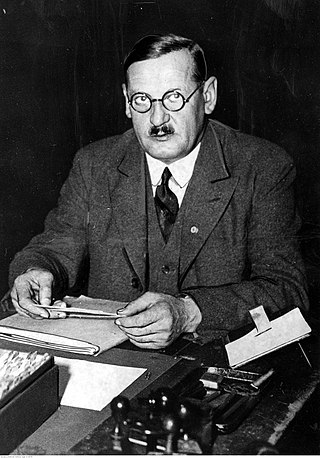
Anton Drexler was a German far-right political agitator for the Völkisch movement in the 1920s. He founded the German Workers' Party (DAP), the pan-German and anti-Semitic antecedent of the Nazi Party (NSDAP). Drexler mentored his successor in the NSDAP, Adolf Hitler, during his early years in politics.

The Nazi Party, officially the National Socialist German Workers' Party, was a far-right political party in Germany active between 1920 and 1945 that created and supported the ideology of Nazism. Its precursor, the German Workers' Party, existed from 1919 to 1920. The Nazi Party emerged from the extremist German nationalist, racist and populist Freikorps paramilitary culture, which fought against communist uprisings in post–World War I Germany. The party was created to draw workers away from communism and into völkisch nationalism. Initially, Nazi political strategy focused on anti–big business, anti-bourgeois, and anti-capitalist rhetoric; it was later downplayed to gain the support of business leaders. By the 1930s, the party's main focus shifted to antisemitic and anti-Marxist themes. The party had little popular support until the Great Depression, when worsening living standards and widespread unemployment drove Germans into political extremism.

The German Workers' Party was a short-lived far-right political party established in Weimar Germany after World War I. It only lasted from 5 January 1919 until 24 February 1920. The DAP was the precursor of the Nazi Party, which was officially known as the National Socialist German Workers' Party.

The Thule Society, originally the Studiengruppe für germanisches Altertum, was a German occultist and Völkisch group founded in Munich shortly after World War I, named after a mythical northern country in Greek legend. The society is notable chiefly as the organization that sponsored the Deutsche Arbeiterpartei, which was later reorganized by Adolf Hitler into the National Socialist German Workers' Party. According to Hitler biographer Ian Kershaw, the organization's "membership list ... reads like a Who's Who of early Nazi sympathizers and leading figures in Munich", including Rudolf Hess, Alfred Rosenberg, Hans Frank, Julius Lehmann, Gottfried Feder, Dietrich Eckart, and Karl Harrer.
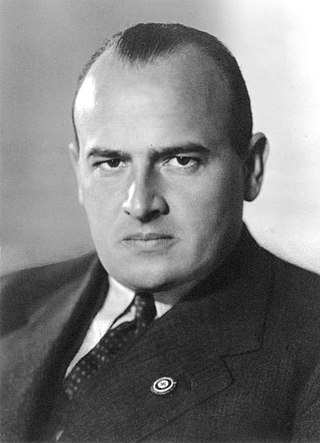
Hans Michael Frank was a German politician, war criminal, and lawyer who served as head of the General Government in German-occupied Poland during the Second World War.
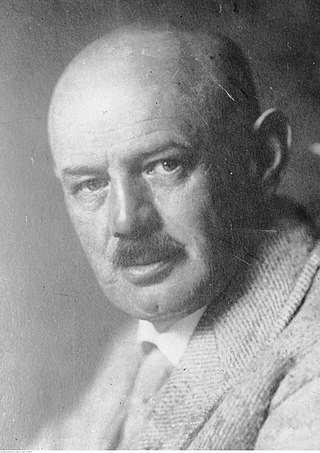
Dietrich Eckart was a German völkisch poet, playwright, journalist, publicist, and political activist who was one of the founders of the German Workers' Party, the precursor of the Nazi Party. Eckart was a key influence on Adolf Hitler in the early years of the Party, the original publisher of the party newspaper, the Völkischer Beobachter, and the lyricist of the first party anthem, "Sturmlied". He was a participant in the failed Beer Hall Putsch in 1923 and died on 26 December of that year, shortly after his release from Landsberg Prison, of a heart attack.
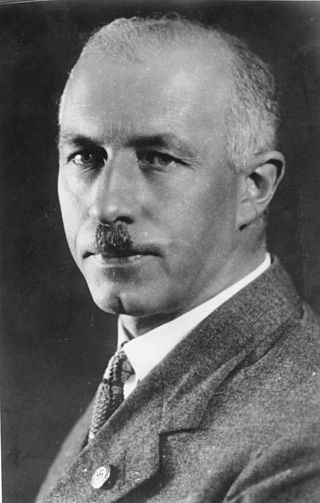
Gottfried Feder was a German civil engineer, a self-taught economist, and one of the early key members of the Nazi Party and its economic theoretician. One of his lectures, delivered on 12 September 1919, drew Adolf Hitler into the party.

Karl Harrer was a German journalist and politician, one of the founding members of the German Workers' Party (DAP) in January 1919, the predecessor to the Nationalsozialistische Deutsche Arbeiterpartei, more commonly known as the Nazi Party.

Gregor Strasser was a German politician and early leader of the Nazi Party. Along with his younger brother Otto, he was a leading member of the party's left-wing faction, which brought them into conflict with the dominant faction led by Adolf Hitler, resulting in his murder in 1934. The brothers' strand of the Nazi ideology is known as Strasserism.
This is a list of words, terms, concepts and slogans of Nazi Germany used in the historiography covering the Nazi regime. Some words were coined by Adolf Hitler and other Nazi Party members. Other words and concepts were borrowed and appropriated, and other terms were already in use during the Weimar Republic. Finally, some are taken from Germany's cultural tradition.
The early timeline of Nazism begins with its origins and continues until Hitler's rise to power.

Adolf Hitler's rise to power began in the newly established Weimar Republic in September 1919 when Hitler joined the Deutsche Arbeiterpartei. He rose to a place of prominence in the early years of the party. Being one of its most popular speakers, he was made the party leader after he threatened to otherwise leave.

The Brown House was the name given to the Munich mansion located between the Karolinenplatz and Königsplatz, known before as the Palais Barlow, which was purchased in 1930 for the Nazis. They converted the structure into the headquarters of the National Socialist German Workers' Party. Its name comes from early Nazi Party uniforms, which were brown. Many leading Nazis, including Adolf Hitler, maintained offices there throughout the party's existence. It was destroyed by Allied bombing raids during World War II.

Altstadt and Lehel are districts of the German city of Munich. Together they form the first borough of the city: Altstadt-Lehel.

Au-Haidhausen is the 5th borough of the German city of Munich, Bavaria. It is formed by the Au and Haidhausen districts.
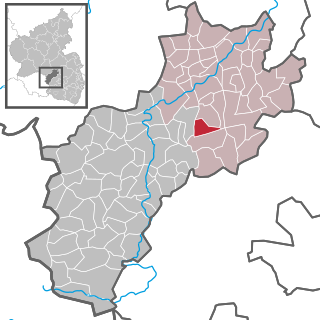
Oberweiler im Tal is an Ortsgemeinde – a municipality belonging to a Verbandsgemeinde, a kind of collective municipality – in the Kusel district in Rhineland-Palatinate, Germany. It belongs to the Verbandsgemeinde Lauterecken-Wolfstein.

Haidhausen is a quarter in Munich, Germany. It is now part of the borough of Au-Haidhausen.

The Sterneckerbräu was a brewery in Munich, Germany. The associated inn served as a meeting place for the first branch of the German Workers' Party (DAP), which later changed its name to the Nazi Party (NSDAP). Similar to the Bürgerbräukeller, it was a place of pilgrimage for the Nazi movement. The building is now used as a residential and commercial building and is a registered monument on the Bavarian monument list.

The Karmeliterstraße - often written Karmelitenstraße until the 19th century - is a street in the center of Munich. It is named after the former Karmelitenkirche on the west side of the street.

The Munich Old Town is part of the Bavarian capital Munich and has belonged to the city the longest, even if some places which are meanwhile districts of Munich, were mentioned long before Munich's documents spoke of the Old Town. The Old Town forms together with the district Lehel, the municipality No. 1 Altstadt-Lehel. The entire area of the Old Town is listed as both a historical ensemble as well as a historical monument listed in the Bavarian historical monument list.



















